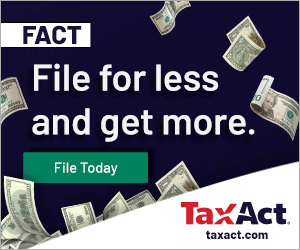What The Self-Employed Should Know About Filing Taxes


File your self employed taxes with confidence.
Backed by our $100k accuracy guarantee.
Updated for tax year 2017
Whether you call yourself a freelancer, a solopreneur, independent contractor, part of the gig economy, or simply self-employed — it’s likely you have to file tax returns and are required to pay different types of taxes including estimated payments.
It’s easy to overlook this tedious task, especially when the cash starts flowing in.
But regardless of your tax bracket, you could wind up on the wrong side of the Internal Revenue Service (IRS), Social Security Administration and possibly your state taxing authorities. That’s nowhere to be when you establish your business.
Here’s what you should know to stay on top of your self-employed tax responsibilities.
File Tax Returns and Pay Taxes
Whether you work for an employer or for yourself, the IRS requires you to pay taxes as you earn your income throughout the year.
When you work for a traditional employer, you fill out IRS Form W-4 to instruct their payroll department how much to withhold for federal (and state, if applicable) taxes. Your employer also calculates the amount of payroll taxes including mandatory Social Security and Medicare taxes you’re responsible for and ensures that amount is withheld from your paycheck and paid to the taxing authorities.
It’s your responsibility when you’re self-employed.
That’s because no employer withholds or pays any taxes on your behalf.
Pay Quarterly Estimated Taxes
As a sole proprietor, it’s great when you get paid in full by your clients.
However, Uncle Sam doesn’t want you to hold onto that money all year. You have an obligation to pay taxes on earnings from self-employment as you collect revenue from your clients.
Once per quarter, you’re required to make estimated tax payments on your tax liability.
“Estimated” means you have to determine how much tax you might ultimately owe. It can be a bit tricky if your taxable income fluctuates during the year.
Simply do the best you can to calculate accurate amounts of your income and expenses. You can adjust the amount for the following quarter if you under- or over-estimated your tax liability.
Always pay your quarterly estimated taxes even if you expect a tax refund when you file your annual return. Otherwise, the IRS might charge you an underpayment or late payment penalty.
Understand the IRS Forms for the Self-Employed
You’ll need various forms to calculate and file your taxes. If you still prepare your taxes manually, you have to attach additional forms to Form 1040, Individual Income Tax Return, when filing your annual state and federal tax return.
However, do-it-yourself (DIY) software such as TaxAct simplifies this task for you and maximize your tax savings. You fill out a straightforward online questionnaire, and the information automatically populates the IRS forms.
Form 1099-MISC
As a business owner, you should receive Form 1099-MISC from each client you provided a service for at the end of the year. The form should list the total gross dollar amount the client paid you. That means taxes have not been deducted.
To calculate your quarterly payments, you might look at last year’s Forms 1099-MISC to estimate your income for this tax year. Of course, you’ll need to adjust those estimates if you’ve had a big swing in business from last year’s amounts.
Schedule C, Profit or Loss From Business
You’ve also have to file Schedule C, Profit or Loss From Business. On this form list your income and your detailed expenses including startup costs. If you use DIY tax software such as TaxAct, simply enter your information when prompted. The program will automatically populate your answers in Form 1040. That saves you time from having to complete both forms!
Tip: Pay attention to the section in Schedule C that asks for information about your vehicle. If your car was used for business purposes, you can deduct related expenses. Be sure to keep written records or use an app to track the miles. Later, you might have to demonstrate to the IRS which miles were for business versus personal use.
Tip: Under certain conditions, you can deduct the use of your home as a business expense. However, the IRS has strict rules about the home office deduction. You must calculate and deduct only the square footage of the area you use exclusively and regularly to run your business.
Schedule SE, Self-Employment Tax
Not only do you have to pay income taxes, but you might also have to pay self-employment tax if your net income is $400 or more ($108.28 for church employees).
This payment covers your required contributions to Social Security and Medicare.
To calculate how much you owe, use Schedule SE, Self-Employment Tax. You can pay self-employment taxes with your quarterly estimated tax payments.
As an employer, you can deduct the employer portion of your self-employment tax when you calculate your adjusted gross income on your annual return. However, it does not reduce your self-employment tax or affect your net self-employment earnings.
Keep Good Records
It’s imperative that you keep detailed records of all your business transactions.
Make sure to keep your business bank accounts separate from your personal checking or savings accounts. Commingling funds make it much harder to showcase your business expenses to the IRS if they ever ask.
Track your income and expenses systematically so you can estimate your quarterly taxes and file your year-end return as well as maximize your deductions and tax savings. In addition, keep track of your cash flow so you can plan to pay your taxes on time.






